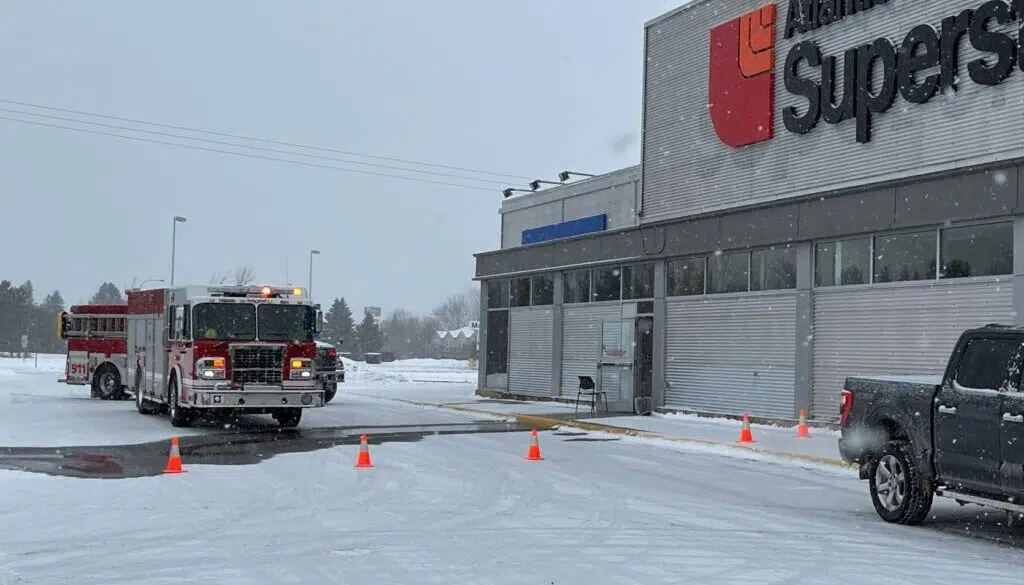Record-shattering cold in early February left many without power and caused burst water pipes and other damages throughout Atlantic Canada.
Now, that extreme weather is having a serious impact on insurance claims across the country and Atlantic Canada is no exception.
Reports of power loss, broken water pipes, and fires all accompanied the record-breaking low temperatures Maritimers faced the first weekend of February. The damage closed schools, damaged homes, and flooded businesses.
“I’d say, from a claims standpoint over the last 15 years, the amount of insurable yearly incurred losses in Canada has basically quadrupled,” says Stephen Hiscock, manager of government relations for the Atlantic Region with the Insurance Bureau of Canada. “Fifteen years ago, we were averaging about $456 million a year in severe weather losses. That’s averaging out to be about $2 billion a year now.”
“In 2022, we hit $3.1 billion in insurable damages across Canada, which I think is the third highest it’s ever been.”
Last year was indeed the third worst year for insured losses in Canadian history IBC’s media room reports.
What makes it even more noteworthy is that there was no single standout event catapulting 2022 to the podium, unlike the worst year for insurance claims on record, 2016, due to the Fort MacMurray wildfires. That incident accounted for 75 per cent of the national losses. In 2022, insurance claims from across the country tallied up to the record cost. Those events included the May ‘derecho’ sudden severe storm in Ontario and Quebec, which alone accounted for $1 billion in claims; $300 million from summer storms in Western Canada; and $800 million for Hurricane Fiona.
“That doesn’t even include the non-insured damage that’s been caused by something like Hurricane Fiona,” Hiscock says. “If you think of the town of Port-aux-Basques, for example, a lot of those people wouldn’t have had any kind of flood or storm surge insurance because they’re either in a high-risk area where it would unaffordable … or not available for insurers in their area.”
And 2023 is shaping up to be no different. Following the early February freeze that saw temperatures drop to -25°C and below in some regions, there were widespread reports of damages.
In Sussex, New Brunswick, the Atlantic Superstore was closed for the day following flooding caused by a water pipe break. In Charlottetown, the Sir Louis Henry Davies Law Courts were closed due to flooding from a burst pipe. And in Halifax, they were walking around with umbrellas inside the Board Room Game Café following a water pipe burst that rained from the second floor of the venue to the first.
Hiscock says it will take weeks to assess all the claims coming in from these and other events.
“When you see those swings in temperature, where it goes from -30°C on the weekend and then it’s one degree on Monday, that definitely has a lot of potential to cause damage,” he says.
“When we think of the freeze/thaw cycle, most of us think of potholes and causing the pavement to heave. That’s not just going to happen on the pavement, but underground as well.”
Although extreme cold and heat are playing a larger role in claims, flooding is the biggest ongoing cause of damages. Storm surges in coastal areas — big waves coming ashore by high wind events — are getting pushed further and further inland.
“In Nova Scotia, we were advocating for the Coastal Protection Act,” he says, of the actions that insurers are taking to try to mitigate the damages done by extreme weather events. The act has passed but is not yet in effect.
“When this comes into effect, new buildings will have to be a certain number of metres back from the coast and above sea level to ensure reduced risk to that infrastructure… and then trying to create incentives to shift the development of homes or businesses away from areas of highest risk.”
He says that as much as it’s nice to be right on the water, it’s often the riskiest place to be.
“A lot of times properties are sloped down toward the coast,” he says. “People want to have their house down by that water for a better view, or access to the beach.”
“There’s not just water that comes from say a storm surge or waves, but if you’re on the low end of your property and there’s a torrential rainstorm, the water’s going to flow down that property towards your structure.”
Hiscock says the insurance industry is working with the government to create a national action plan on flooding, to provide assistance beyond just disaster financing. He says the industry has identified about 1.5 million homes across the country that are too risky for the private insurance market to cover.
“We’ve been pushing to try to find a solution that involves not just government, but also the private insurance industry, working together.”
Alex Graham is a reporter with Huddle, an Acadia Broadcasting content partner.







